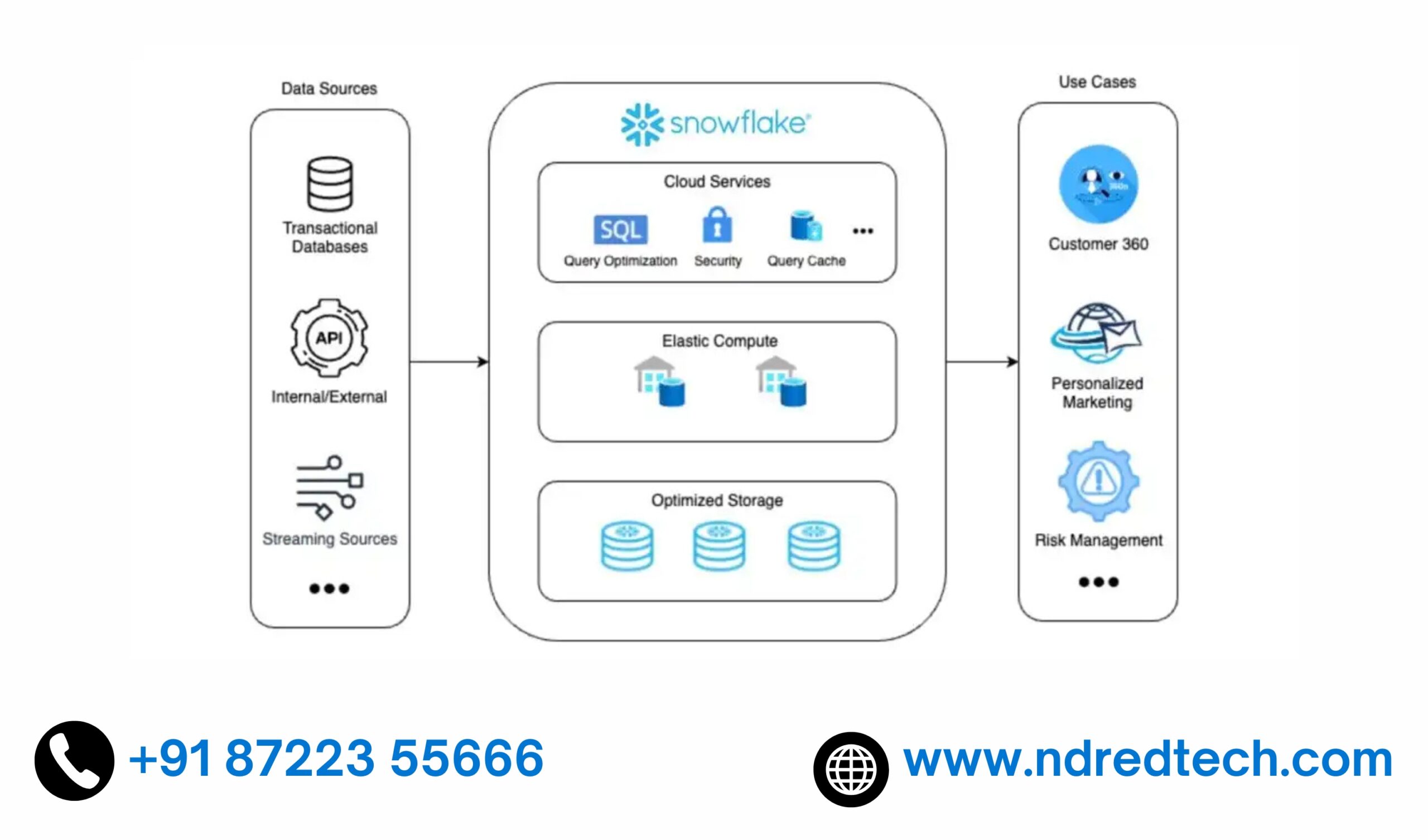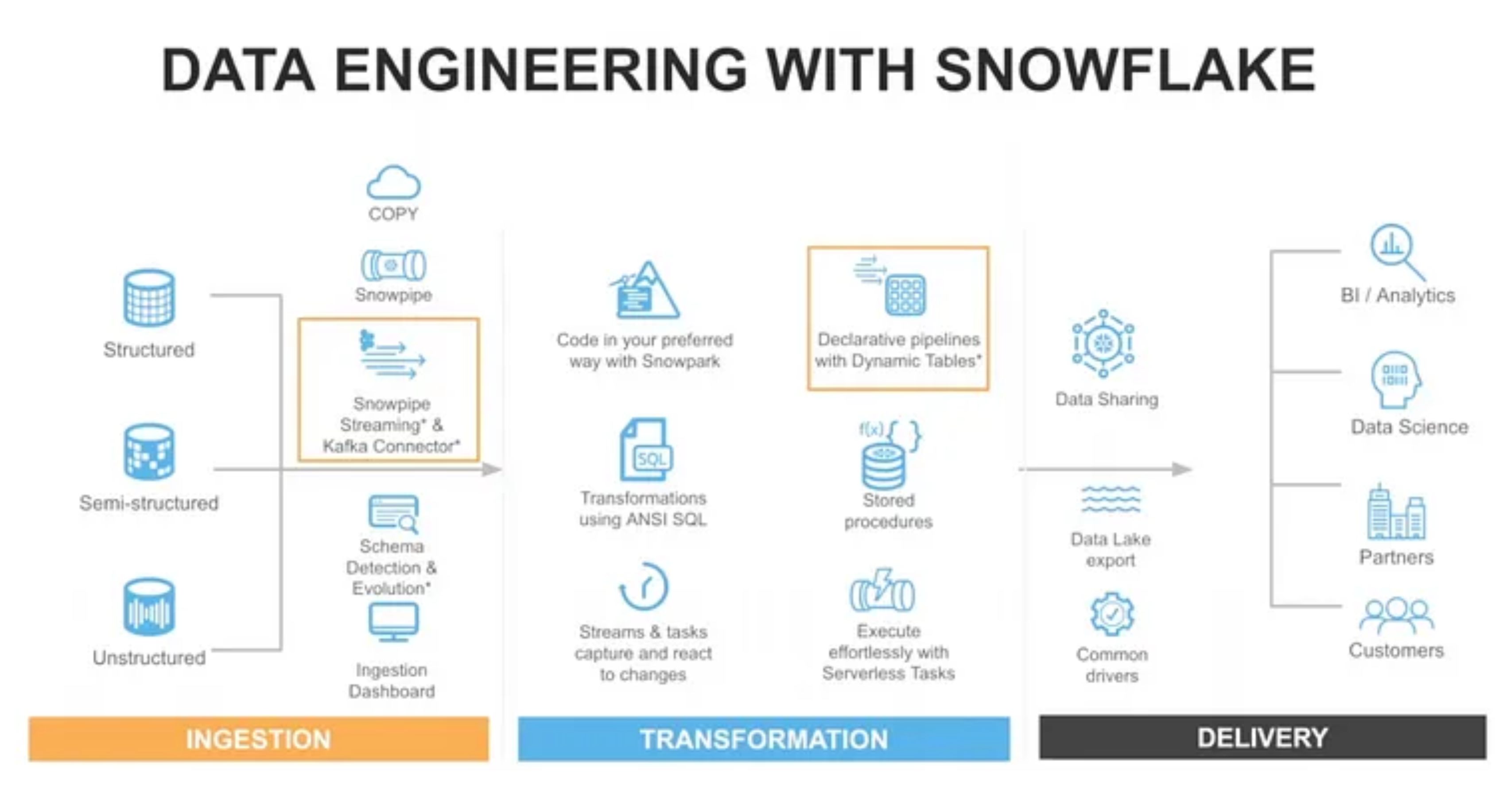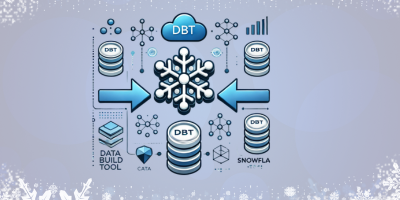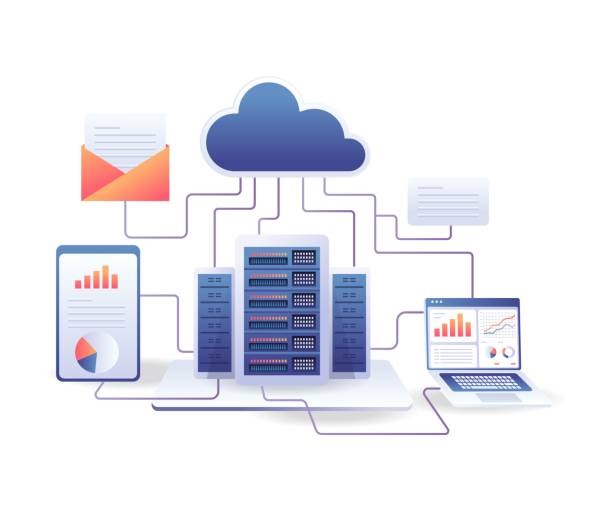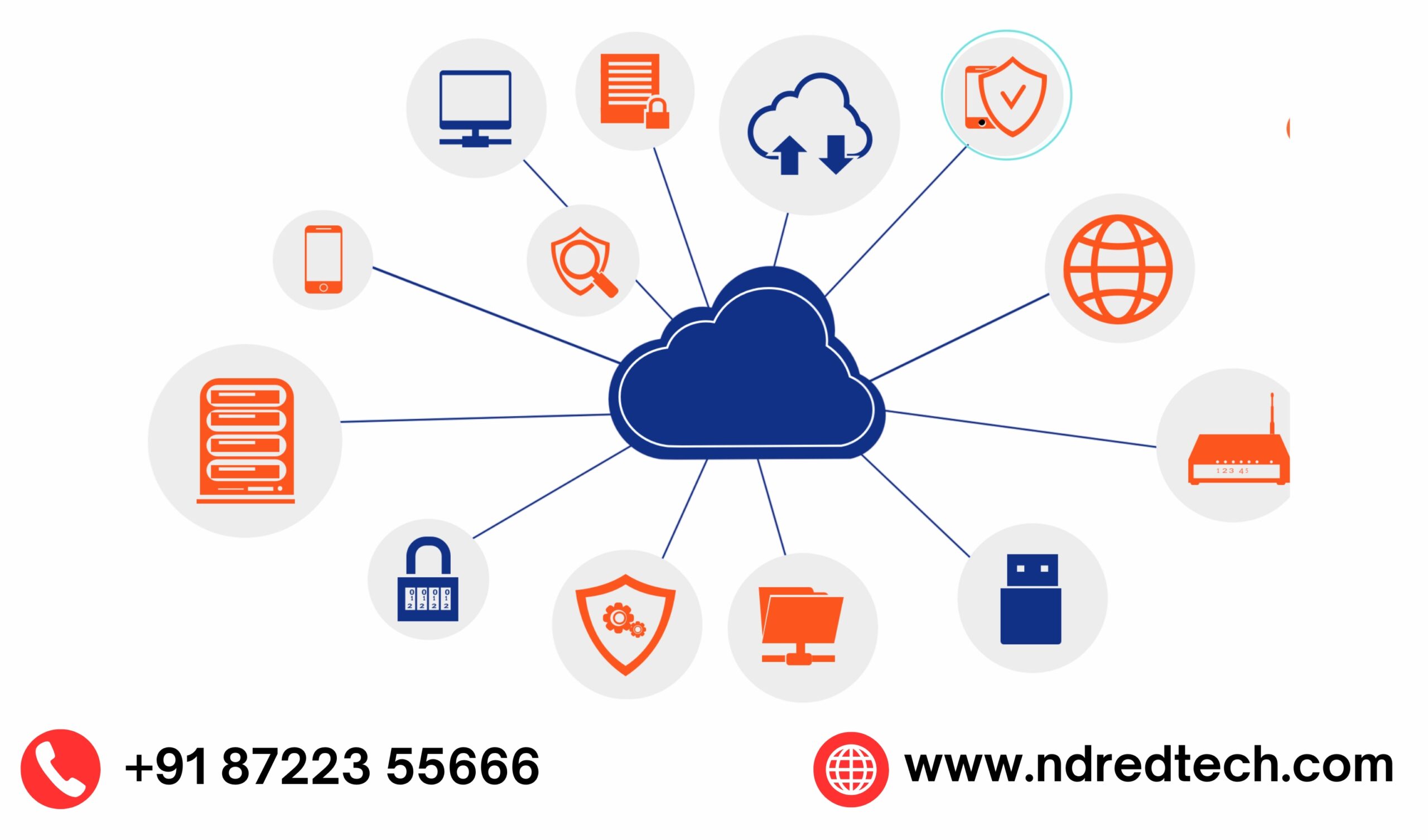Snowflake is a cloud-based data platform designed for modern data warehousing and analytics. Unlike traditional databases, Snowflake uses a multi-cluster, shared data architecture that separates storage, compute, and cloud services for scalability and efficiency.

Key Components of Snowflake Architecture
1.Storage Layer
- Snowflake stores data in a proprietary, columnar format in cloud storage (AWS S3, Azure Blob, or Google Cloud Storage).
- It automatically compresses and partitions data for efficient query performance.
- Data is stored as immutable micro-partitions.
Implementation Example
Uploading data into Snowflake from an S3 bucket:
CREATE OR REPLACE STAGE my_s3_stage
URL='s3://mybucket/data/'
STORAGE_INTEGRATION = my_s3_integration;
COPY INTO my_table
FROM @my_s3_stage/file.csv
FILE_FORMAT = (TYPE = 'CSV' SKIP_HEADER = 1);2.Compute Layer (Virtual Warehouses)
- Compute resources are called Virtual Warehouses, which process queries and transform data.
- Warehouses can be scaled up/down dynamically and run independently from the storage layer.
Implementation Example
Creating and resizing a virtual warehouse:
CREATE OR REPLACE WAREHOUSE my_wh
WITH WAREHOUSE_SIZE = 'X-SMALL' AUTO_SUSPEND = 60;
ALTER WAREHOUSE my_wh SET WAREHOUSE_SIZE = 'MEDIUM';3.Cloud Services Layer
- Manages metadata, authentication, security, query optimization, and transactions.
- Ensures automatic query caching for faster execution.
Implementation Example
Checking query history using Snowflake metadata functions:
SELECT query_id, start_time, total_elapsed_time, query_text
FROM TABLE(INFORMATION_SCHEMA.QUERY_HISTORY())
ORDER BY start_time DESC
LIMIT 5;Key Features of Snowflake Architecture
1.Separation of Storage and Compute
- Unlike traditional databases, Snowflake allows you to scale compute without affecting storage costs.
- Different workloads (ETL, BI, ad hoc analysis) can run independently on separate warehouses.
2.Automatic Scaling and Concurrency
- Snowflake’s multi-cluster warehouses prevent resource contention.
- When multiple users run queries simultaneously, Snowflake scales automatically.
Implementation Example
Configuring a multi-cluster warehouse:
CREATE OR REPLACE WAREHOUSE my_multi_wh
WITH WAREHOUSE_SIZE = 'LARGE'
MIN_CLUSTER_COUNT = 2
MAX_CLUSTER_COUNT = 4
SCALING_POLICY = 'STANDARD';3.Zero-Copy Cloning
- Snowflake allows you to clone tables, schemas, or databases without duplicating storage.
Implementation Example
Cloning a table:
CREATE OR REPLACE TABLE cloned_table AS SELECT * FROM original_table;4.Time Travel & Fail-Safe
- Time Travel allows you to retrieve past data versions within a retention period (up to 90 days).
- Fail-Safe is an additional 7-day recovery period for data protection.
Implementation Example
Restoring a table to a previous state:
SELECT * FROM my_table AT(TIMESTAMP => '2024-02-26 10:00:00');Conclusion
Snowflake’s architecture offers high performance, elasticity, and cost efficiency by separating storage, compute, and cloud services. Developers can take advantage of automatic scaling, query optimization, and security features to build scalable data applications.

